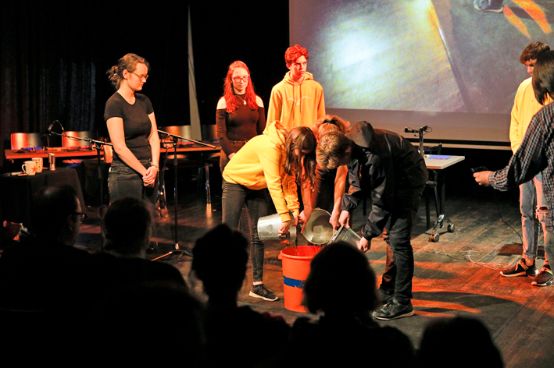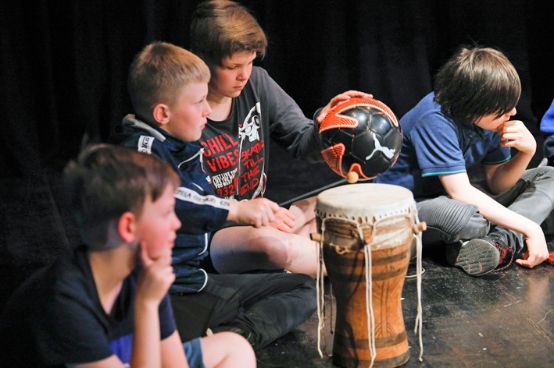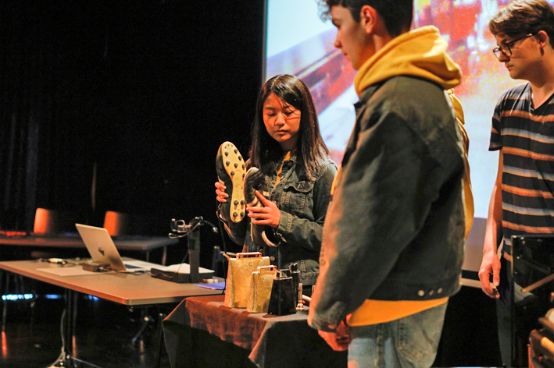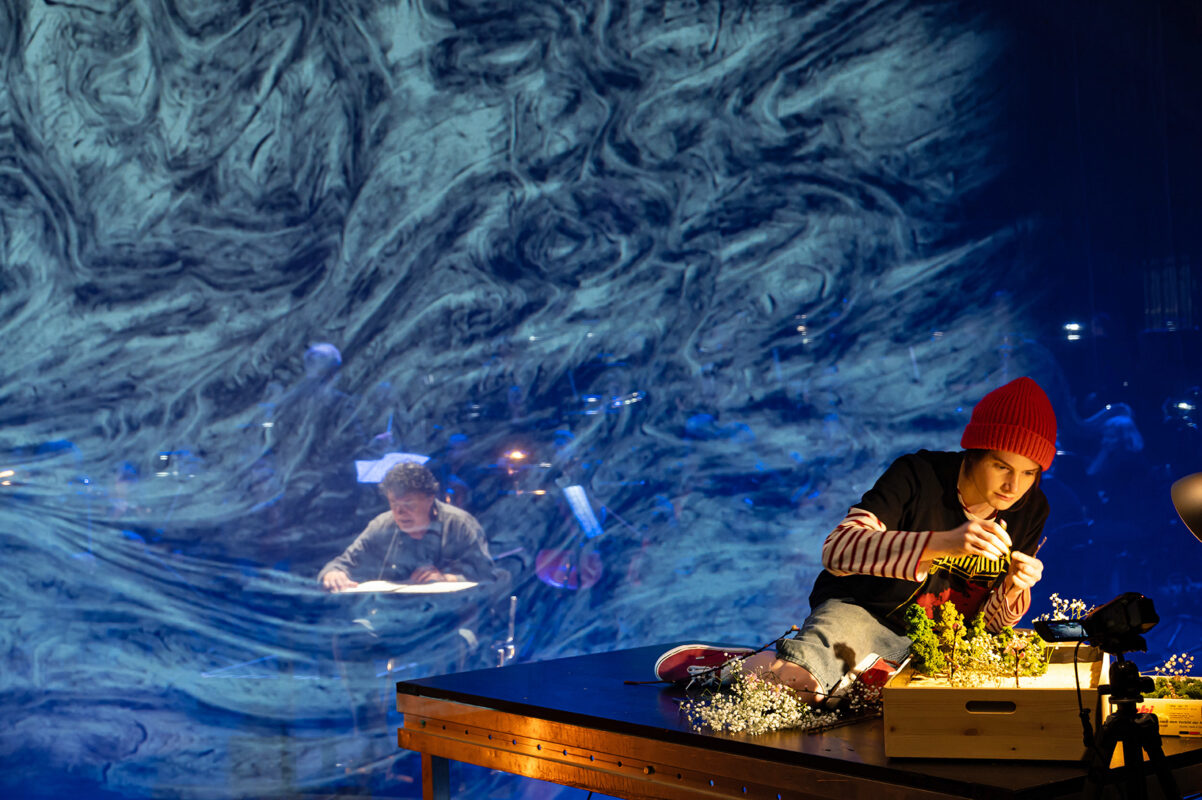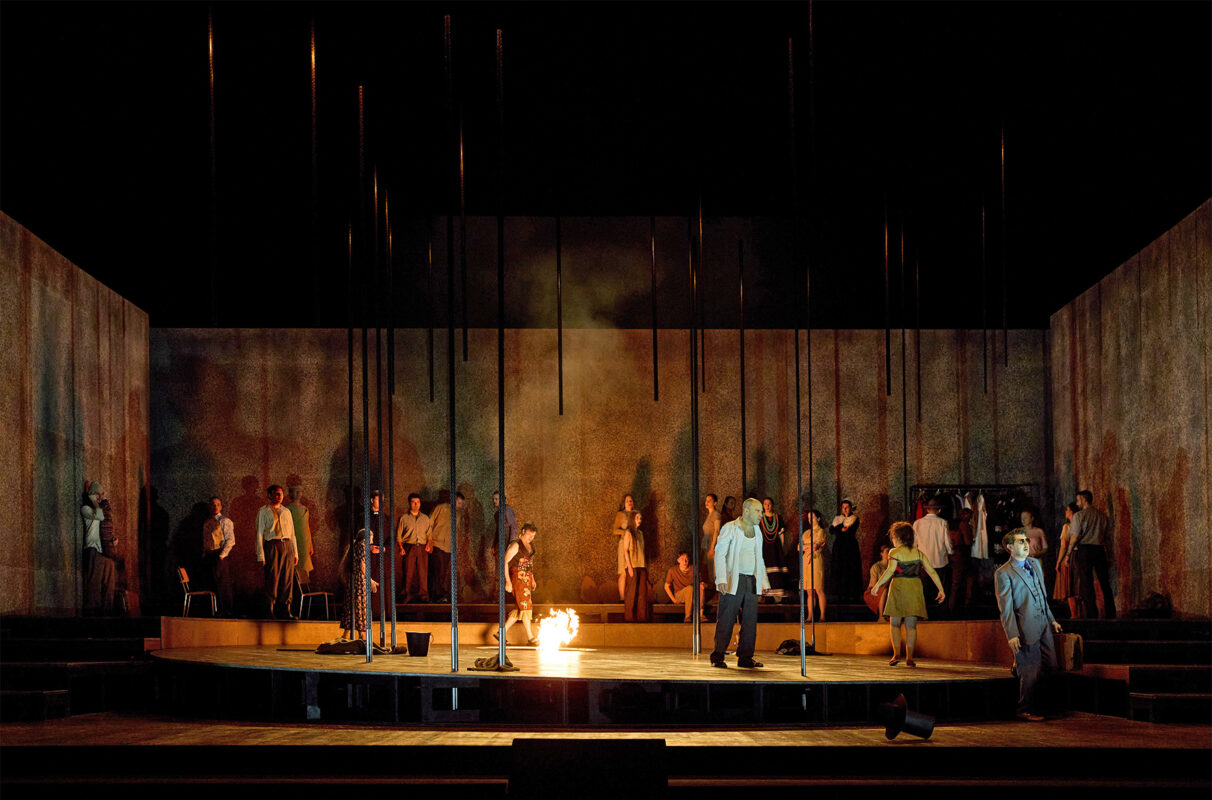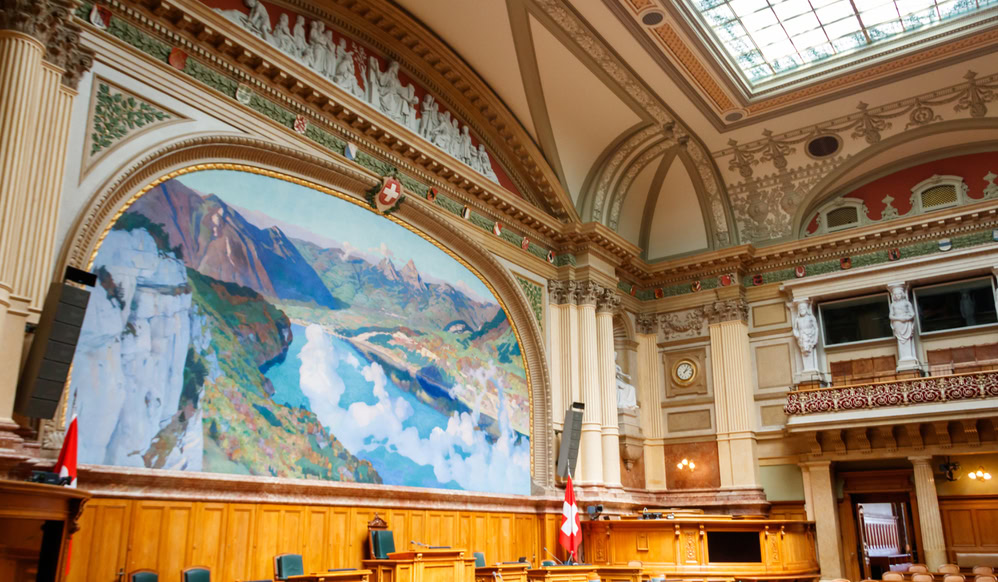What does the future sound like?
A conference organized by the Young Ears Network in Berlin presented experimental approaches to sound work with children in schools. Barbara Balba Weber from Bern also gave a lecture.
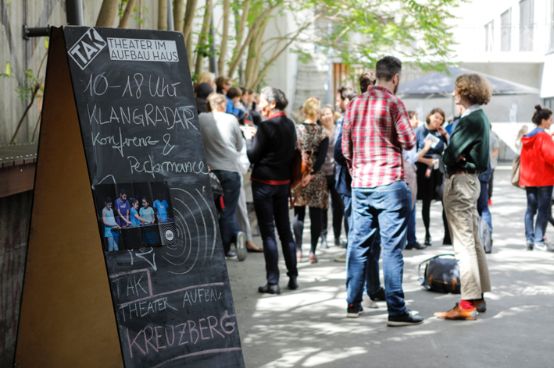
The fifth graders stand on the stage with concentration. Some are playing percussion instruments, one girl has put a guitar on her lap and is plucking on it. A group of children whistle and make sounds with their mouths: humming, squeaking, popping, clicking. A child lets water run into a container, the sound is amplified by microphones.
The piece that can be heard here was created by the children as part of the Klangradar project. The concept: composers visit a school for three months and embark on a sound expedition together with the pupils. Klangradar and the results of this year's project phase on the theme of "Happiness. A search for sound traces" were presented at the conference Setting out into new worlds of listening. School & sound research on May 23, 2019 in Berlin. The event was organized and hosted by the Young Ears Network.
Lead and follow
As composer Cathy Milliken explained in her introductory keynote speech, anyone who wants to lead such a collaborative composition process must have the paradoxical ability to lead and follow at the same time. Because only those who really engage with the soundscapes that the other participants bring with them can create "new" music and go beyond the limitations of their own ideas of sound.
Music educator Barbara Balba Weber from Bern University of the Arts also emphasized that openness is one of the qualities needed for such music education projects. In the encounter between students, teachers and professional musicians, very different ideas of what music is come together - and in the best case, merge into an unheard-of new whole. Every timbre, every idea of sound has its place, and so collaborative composing becomes an exercise in democracy, diversity and equality.
Walk and construct
How sound experiments can be incorporated into everyday school life was presented in a tour of "Sound research in school practice". For example, the "Soundwalk". Led by musician and cultural scientist Manuel Schwiers, a group moved through the Kreuzberg summer afternoon listening. What does the transition from the backyard to the street actually sound like? What sound environments do I encounter as I move through the city? And what influence do I have by focusing my attention on different aspects of the city's sound? Is this perhaps already a kind of composition? After several intensive phases of listening, such questions were discussed everywhere, and it became clear that simply listening to the environment, for which no further materials are necessary, can offer many possible approaches for working with pupils - at least if they succeed in engaging in this kind of heightened perception.
The composer Steffi Weismann makes the pupils' surroundings sound in a slightly different way, namely by having them build their own instruments from everyday objects. One of her discoveries: the squeaking noises that polystyrene makes when it is moistened and rubbed against glass panes. Weismann also builds instruments with the children from buckets, plastic packaging and rubber bands, which are used in the composition projects.
Looping and kneading
How apps can be used for educational sound work was presented by musician Matthias Krebs, who is exploring the sound possibilities of the Elbphilharmonie building in Hamburg together with pupils. They use tablets to create short video sequences that can be digitally edited, combined and looped to create their own sound sequences.
The sound artist and gallery owner Knut Remond expands the dimensions of what sound actually is to include sculpture. His experiment presented at the conference: go out, listen to your surroundings - and then transform what you hear into a "sound sculpture" with the help of plasticine or clay. What sounds might be created when these sculptures are in turn interpreted by musicians?
The conference proved that there is no shortage of ideas for sound experiments. And in the panel discussion "What does the school of the future sound like?" it became clear that more and more schools are getting involved in such projects, even if the fixed structures of everyday school life do not exactly make this easy. The conference participants certainly took home some inspiration as to how they too can contribute in future to making schools sound like diversity, community and a new beginning.






